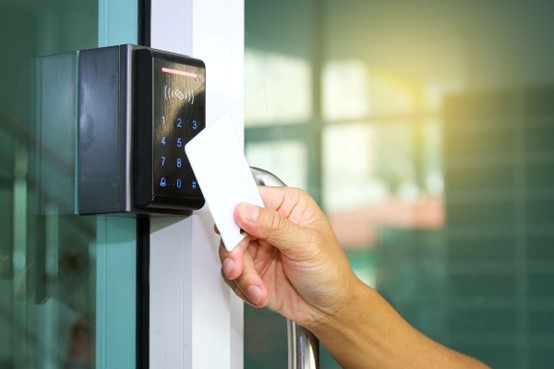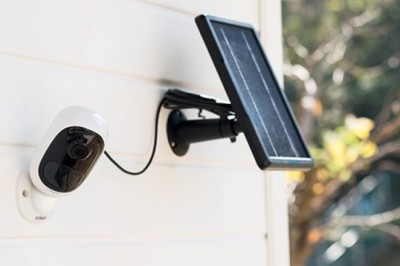views

Access control security services are critical components in the protection and management of physical and digital assets. These services ensure that only authorized individuals can access specific resources, whether it be a building, a room, or sensitive information stored digitally.
In this article, we will explore three primary access control security services: physical access control, logical access control, and biometric access control. Each of these services plays a unique role in enhancing security and managing access effectively.
1. Physical Access Control
Physical access control refers to the methods and mechanisms used to control access to physical locations, such as buildings, rooms, or specific areas within a facility. This type of access control is crucial for protecting tangible assets, ensuring the safety of personnel, and preventing unauthorized entry.
Components of Physical Access Control
- Identification Devices: These include keycards, HID key fob, and access badges. Each device is linked to an individual user, allowing the system to recognize and authenticate the person attempting to gain entry.
- Access Points: These are the doors, gates, or barriers that restrict entry to certain areas. They are equipped with electronic locks that can be controlled remotely or through an access control panel.
- Control Panels: These are centralized systems that manage access permissions and record entry logs. They often integrate with other security systems such as surveillance cameras and alarm systems.
Implementation and Benefits
Implementing a robust physical access control system involves setting up the necessary hardware, such as electronic locks and access readers, and configuring the control software to manage access permissions. One significant benefit of physical access control is its ability to provide real-time monitoring and record-keeping, which can be crucial for security audits and incident investigations.
Moreover, physical access control systems can be tailored to the specific needs of an organization. For example, a company may implement different access levels, granting certain employees entry to restricted areas while limiting others to general zones. This flexibility enhances overall security and operational efficiency.
2. Logical Access Control
Logical access control pertains to the mechanisms that manage access to digital resources, such as computer systems, networks, and data. This form of access control is essential for protecting sensitive information and ensuring that only authorized users can perform specific actions within a digital environment.
Components of Logical Access Control
- Authentication Methods: These include passwords, PINs, multi-factor authentication (MFA), and digital certificates. Authentication ensures that the person attempting to access the system is who they claim to be.
- Authorization Protocols: Once authenticated, users are granted permissions based on their role within the organization. These permissions dictate what actions they can perform and what data they can access.
- Access Control Lists (ACLs): ACLs are lists that specify which users or system processes are granted access to certain resources. They play a crucial role in defining and managing access rights within a network.
Implementation and Benefits
To implement logical access control effectively, organizations must establish strong authentication and authorization mechanisms. This may involve using complex passwords, employing MFA, and regularly updating access permissions to reflect changes in user roles or responsibilities.
One of the main benefits of logical access control is its ability to protect sensitive data from unauthorized access and potential breaches. By controlling who can access certain information and what they can do with it, organizations can significantly reduce the risk of data theft, corruption, and misuse. Additionally, logical access control systems often provide detailed audit trails, which are invaluable for tracking user activity and identifying suspicious behavior.
3. Biometric Access Control
Biometric access control uses unique biological characteristics, such as fingerprints, facial recognition, and iris scans, to verify an individual's identity. This form of access control is becoming increasingly popular due to its high level of security and convenience.
Components of Biometric Access Control
- Biometric Scanners: These devices capture and analyze biometric data. Common types include fingerprint scanners, facial recognition cameras, and iris scanners.
- Biometric Templates: When a biometric scan is performed, the system creates a template—a digital representation of the biometric data. This template is then stored and used for future comparisons.
- Matching Algorithms: These algorithms compare the biometric data presented by a user to the stored templates to verify identity. The accuracy and speed of these algorithms are critical for the effectiveness of the system.
Implementation and Benefits
Implementing biometric access control involves setting up biometric scanners at entry points and integrating them with existing access control systems. This setup ensures that only individuals whose biometric data matches the stored templates can gain access.
The primary benefit of biometric access control is its high level of security. Since biometric traits are unique to each individual and difficult to replicate, this form of access control significantly reduces the risk of unauthorized access. Moreover, biometric systems eliminate the need for physical keys or cards, which can be lost or stolen, and passwords, which can be forgotten or compromised.
Biometric access control also enhances user convenience. For example, employees can gain entry to a building or system simply by scanning their fingerprint or face, eliminating the need to carry and manage access cards or remember multiple passwords.
Conclusion
Access control security services are vital for protecting both physical and digital assets. Physical access control safeguards tangible resources and personnel, logical access control protects sensitive data and digital systems, and biometric access control offers a high level of security and convenience through unique biological identifiers. Each of these services, when implemented effectively, contributes to a comprehensive security strategy that addresses various aspects of access management.
By understanding and utilizing these three access control security services, organizations can create a secure environment that not only protects their assets but also enhances operational efficiency. Whether through the use of HID key fobs for physical access, strong authentication protocols for logical access, or biometric scanners for advanced security, the right access control system can make a significant difference in maintaining security and integrity across all areas of an organization.

























Comments
0 comment